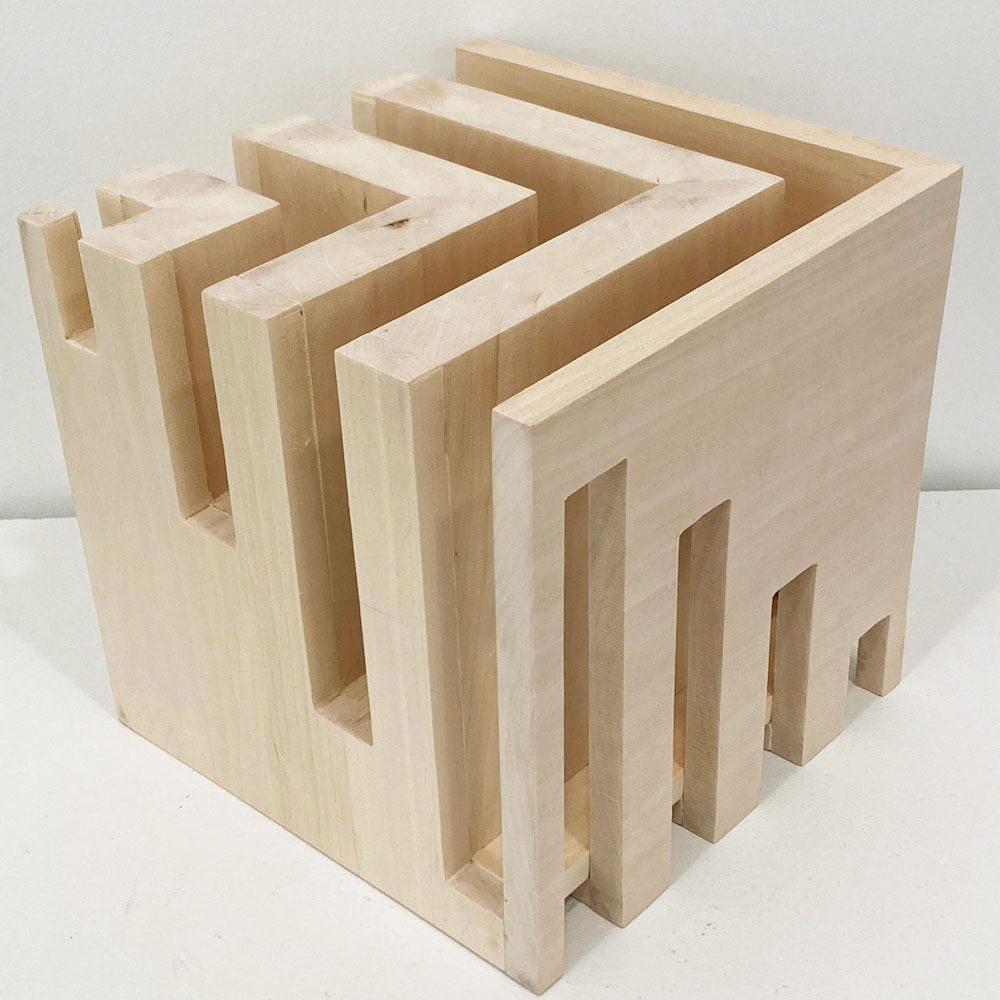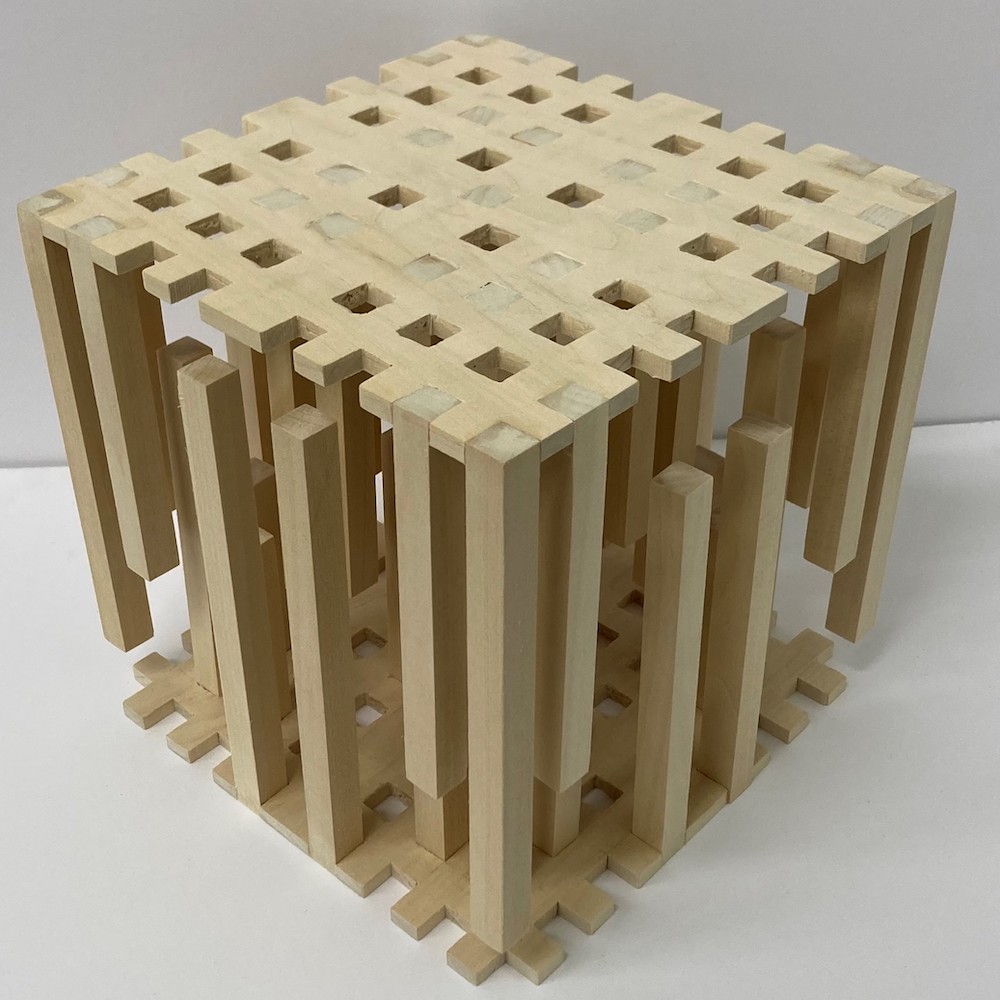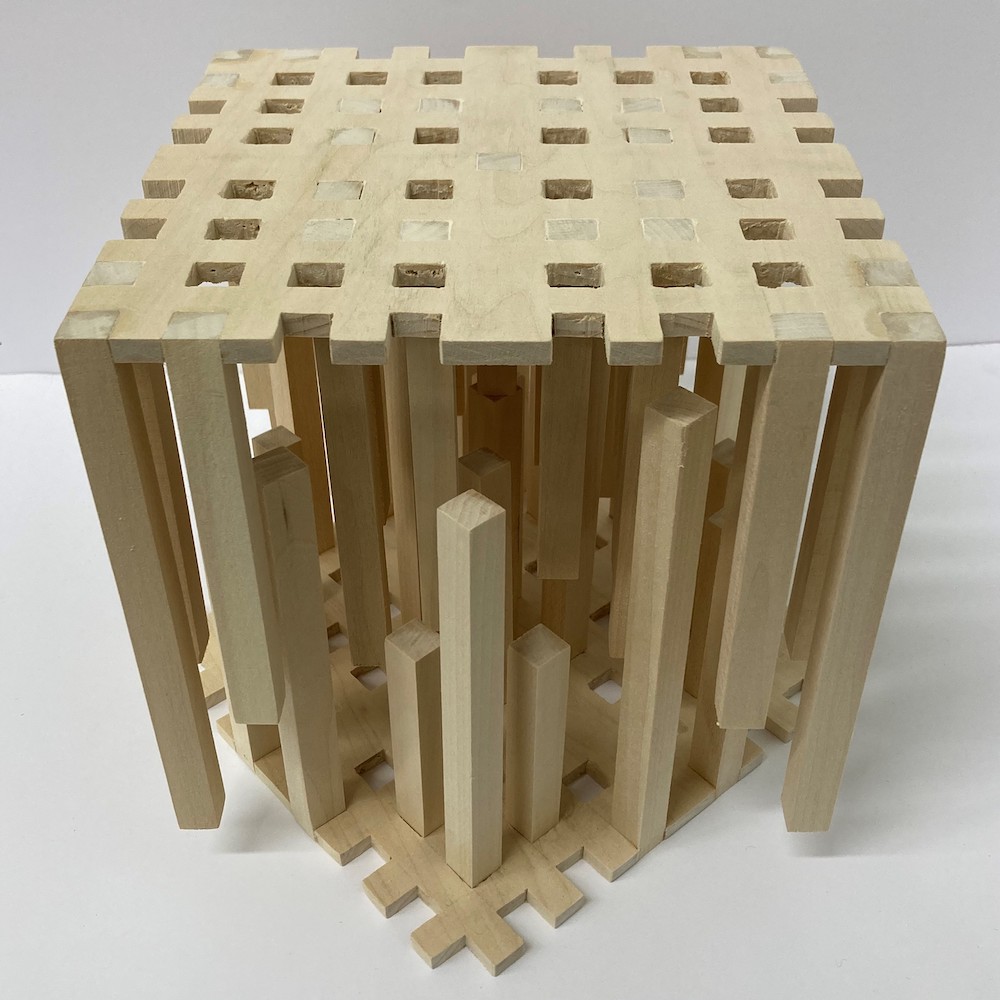Stereotomic and Tectonic Objects
Principal Researchers: Jay Tully
Faculty Advisor: Mira Woodson
STEREOTOMIC
From the tectonic object you can see a stepping affect or gradient within the lengths of the linear components so I took that characteristic and created a similar stepping affect with voids.

The model was design from a simple parallel line pattern from which you can see in my orthographic drawings. This simple parallel line pattern sweeps across three sides of the object and then is repeated with a slightly different variation on the other half of the object. In one of the patterns, there are two gradients represented: a gradient in depths of the sweeping voids and a gradient in lengths of the sweeping voids. In the other pattern there is only a gradient in the lengths of the sweeping voids.

This decision of varying the patterns was a constructability condition. If the two patterns had both gradients, the voids would intersect and create an inconsistent composition with a confusing language among each component. When viewing this pattern in 2 dimensions, the relationship between each line is only just an offset from the previous. When viewed in 3 dimensions, that same pattern creates a relationship between its components that can be interpreted in two different ways.
In one interpretation, you can say these are extrusions sweeping through the object. In the other, you can say there are voids sweeping through the object. Either way this relationship is a Ying and Yang correlation. Without one, there is no other. In other words, the voided spaces create the extrusions and the extrusions create the voided spaces. You can see this correlation in the voided isometric. The voids are almost a mirror image of the solids. With the pattern being applied to a 3-dimensional object, a unique moment happens when the two patterns intersect.
The patterns become broken at this moment and two voids are created that extend fully through the object. These voids are the only thru voids of the entire model which I have highlighted in my orthographic drawings as well as in one of my section cuts. There is one last characteristic of this object. When viewing each pattern at their centers, you can see somewhat of an illusion of offset hexagons as shown in the image on the previous page. This visual throws off your perception and makes you think you’re seeing something 2-dimensionally.
TECTONIC OBJECTS This model represents a gridded ordering system with an element of linear. As you can see, the top and bottom are constructed in a locked gridded pattern that are mirrored from one another. The vertical pieces are simply extrusions of specifically selected grid squares that don’t fully reach the opposing grid. This creates a floating visual and acts as if the vertical pieces want to extend all the way through their opposing grid.

Capping these vertical components give the model a push/pull effect which feels like the model wants to pull apart or compress together. The linear element is seen from its elevation views looking through the model. The vertical pieces are positioned in a way where they line up to create vertical slots to see completely through the model. This is visually satisfying as there are no random obstructions in this barred viewpoint.

When the model is in rotation, the barred visual transitions to an aggregation of randomly positioned obstacles and the light is almost completely blocked from coming through the model. In this motion state, the model acts like pins in a lock. Once the grids are aligned again, the vertical pieces then realigned simulating the aligned pins in a lock and creates the open view once again.
As mentioned earlier, the vertical components are positioned on specific grid squares solely for the reason to avoid the opposing extrusions. This avoidance creates a puzzling feeling for the viewer in which the model does not seem to be connected in an obvious way. To accomplish this effect, the center extrusion is pushed all the way through the model with a hidden axle in its center. This allows the model to freely rotate about its two halves.